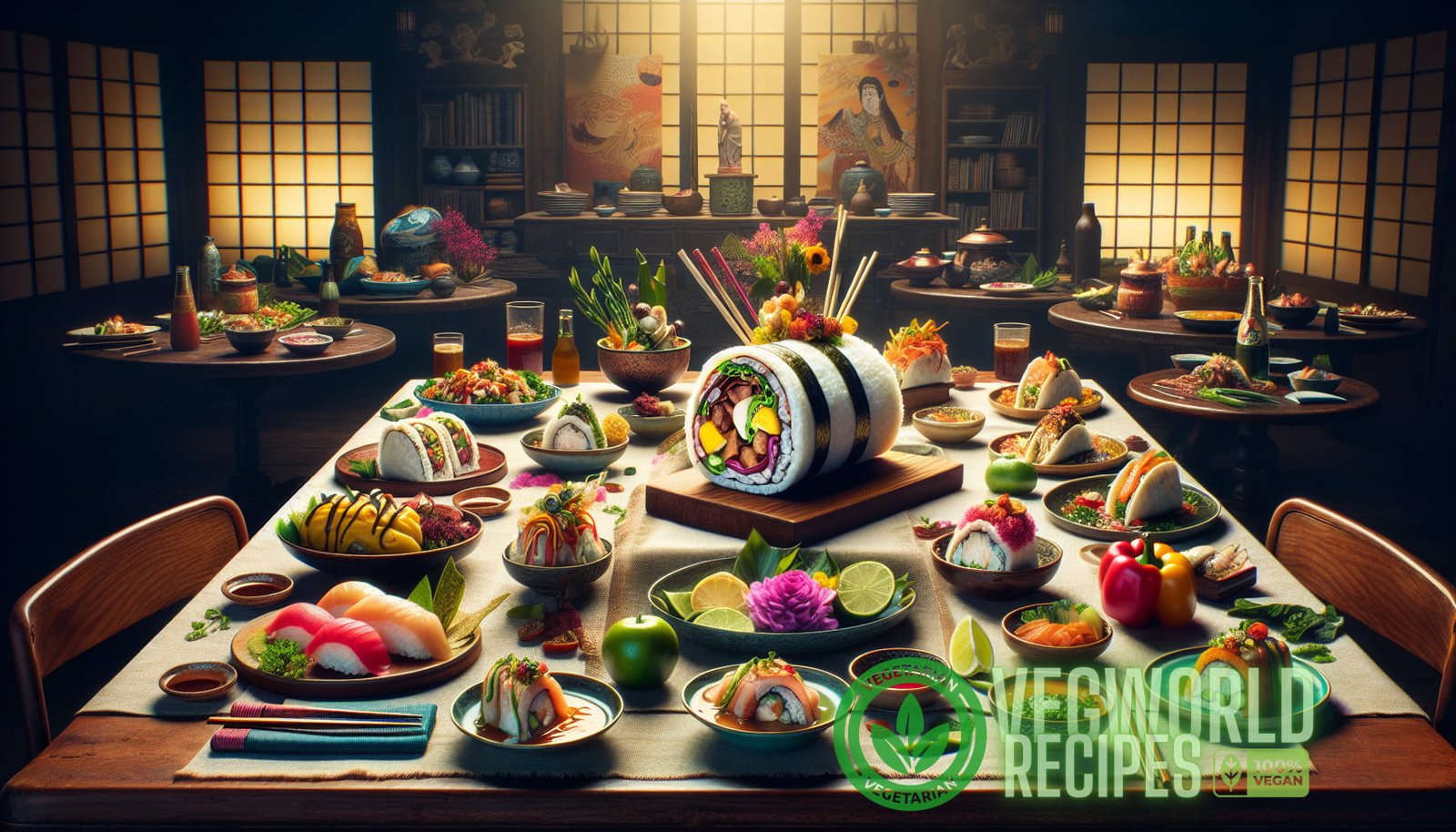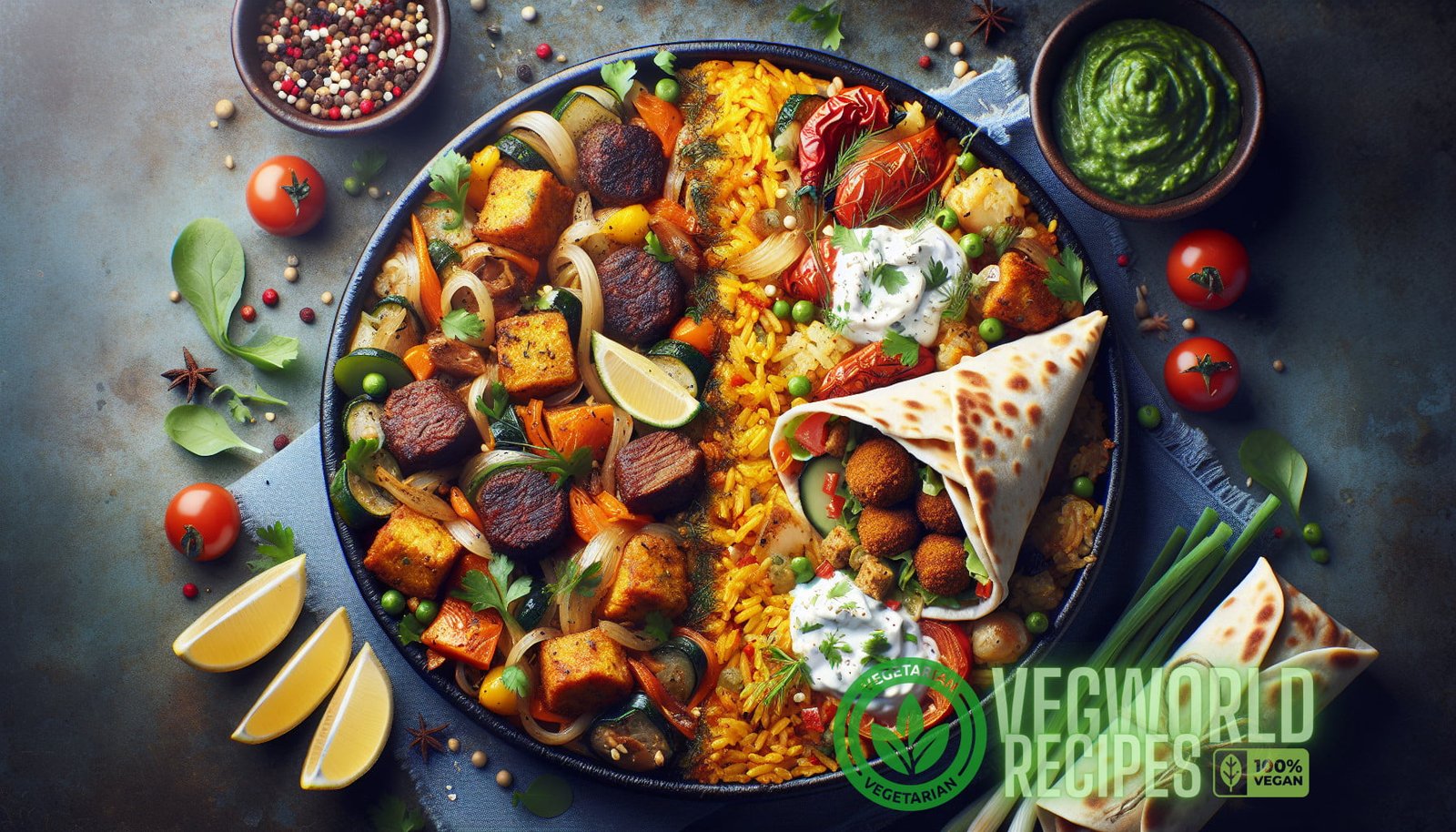Introduction
Unearthing the Enigmatic Culinary Traditions: Revealing the Intricate Fusion of Indigenous Ingredients in Global Cuisine
When it comes to the culinary world, the phrase “culinary fusion” holds a significant place. The mesmerizing flavors that grace our taste buds today are a result of the intricate blend of indigenous ingredients from different cultures. Global cuisine is a testament to the richness and diversity of our planet. It reflects the intertwining histories, cultural exchanges, migration, and innovation that have shaped our culinary landscape.
In this comprehensive guide, we will explore the fascinating world of culinary fusion, uncovering the secrets behind the unique flavor combinations that have emerged over centuries. From the ancient spice routes to modern-day food trends, we will delve into the stories behind the fusion of indigenous ingredients in global cuisine, and how they have transformed the way we eat.
The Origins of Culinary Fusion
Throughout history, human migration, trade, and cultural exchanges have played a significant role in shaping global cuisine. As different cultures came into contact with one another, their culinary traditions merged, giving birth to new and exciting flavor profiles.
Indian Cuisine and the Spice Routes: One of the earliest examples of culinary fusion can be traced back to the ancient spice routes. The spice trade, which flourished during the medieval period, connected the Indian subcontinent with Europe, the Middle East, and beyond. This exchange of spices introduced new flavors and ingredients to various cuisines, leading to the creation of dishes like curry in Indian cuisine and the blending of spices in Moroccan cuisine.
The Silk Road and the Confluence of Cultures: The Silk Road, a network of trade routes that connected the East and West, was another major catalyst for culinary fusion. It facilitated the exchange of goods, including spices, herbs, and produce, as well as cultural and culinary practices. The fusion of Chinese, Persian, Central Asian, and Mediterranean cuisines along the Silk Road gave rise to iconic dishes such as pilaf, kebabs, and dumplings.
Colonialism and the Global Spread of Ingredients: The age of exploration and colonization in the 15th and 16th centuries brought about an unprecedented exchange of goods between different continents. The Columbian Exchange, named after Christopher Columbus, led to the global diffusion of ingredients and culinary techniques. For example, tomatoes were introduced to Italy from the New World and became an integral part of Italian cuisine, while chili peppers found their way from the Americas to India, adding heat to traditional Indian dishes.
The Fusion of Indigenous Ingredients in Modern Global Cuisine
The fusion of indigenous ingredients in modern global cuisine is a dynamic and ongoing process. With the advent of globalization, increased travel, and the interconnectedness of our world, culinary fusion has reached new heights. Let’s explore some of the fascinating examples of this fusion in different regions:

Asian Fusion Cuisine
Asian fusion cuisine has gained immense popularity in recent years. The combination of traditional Asian ingredients and cooking techniques with flavors from other regions creates a unique and innovative dining experience. Here are some notable examples:
- Sushi Burritos: A fusion of Japanese sushi and Mexican burritos, this trendy dish combines the freshness of sushi with the convenience of a handheld wrap.
- Korean Tacos: The fusion of Korean flavors with Mexican street food has given rise to mouthwatering Korean tacos. These tacos feature marinated meats, kimchi, and spicy sauces.
- Thai Curry Pizza: The fusion of Thai curry and Italian pizza has resulted in a harmonious blend of flavors. Bite into a slice of this unique pizza, and you’ll experience the creamy richness of Thai curry with the crispness of a pizza crust.
Latin-Asian Fusion Cuisine
Latin-Asian fusion cuisine, often referred to as “Chino-Latino” or “Asian-Latino,” is an exciting culinary trend that has gained popularity in the United States and beyond. This fusion combines Latin American flavors and ingredients with East Asian influences, resulting in a vibrant and flavorful cuisine. Some popular examples include:
- Miso Carnitas Tacos: A fusion of Japanese miso and Mexican carnitas, these tacos feature tender, slow-cooked pork marinated in a savory miso sauce.
- Korean Arepas: Arepas, a traditional Latin American cornbread, are filled with Korean-inspired ingredients such as bulgogi beef, kimchi, and gochujang sauce.
- Sake Mojito: A twist on the classic mojito, this Latin-Asian fusion cocktail combines the refreshing flavors of mint, lime, and rum with the distinct taste of sake.
Mediterranean-Middle Eastern Fusion Cuisine
The fusion of Mediterranean and Middle Eastern cuisines has resulted in a delightful fusion of flavors, combining the freshness of Mediterranean ingredients with the bold and aromatic spices of the Middle East. Here are some examples:
- Shawarma Pizza: This fusion dish combines the flavors of a classic Lebanese shawarma with a crispy and cheesy pizza crust, topped with tahini sauce and fresh herbs.
- Moroccan-Inspired Paella: A fusion of Moroccan tagine and Spanish paella, this dish features fragrant spices, tender meats, and a vibrant mix of vegetables, all cooked in a delicious saffron-infused rice.
- Falafel Wrap with Tzatziki: A fusion of Greek and Lebanese cuisines, this wrap combines the crispy goodness of falafel with the creamy tang of tzatziki sauce, resulting in a mouthwatering vegetarian delight.

A Global Culinary Tapestry: The Significance and Impact of Culinary Fusion
The fusion of indigenous ingredients in global cuisine goes beyond creating delicious meals. It is a testament to the interconnectedness and diversity of our world. Here are some key reasons why culinary fusion is significant:
- Cultural Exchange and Understanding: Culinary fusion allows us to experience different cultures, traditions, and flavors. It fosters a sense of curiosity, appreciation, and understanding for diverse communities.
- Innovation and Creativity: Culinary fusion sparks innovation and creativity in the culinary world. Chefs experiment with flavors, textures, and cooking techniques, pushing the boundaries of traditional cuisine and creating new and exciting dishes.
- Economic Impact: Culinary fusion has a significant economic impact. The rise of fusion restaurants and the growing demand for unique dining experiences contribute to job creation, tourism, and the growth of local economies.
- Sustainability and Locally Sourced Ingredients: Culinary fusion encourages the use of locally sourced ingredients, supporting sustainable agricultural practices and local farmers. It promotes an awareness of food sourcing and the importance of preserving traditional ingredients and culinary heritage.
The Future of Culinary Fusion
The world of culinary fusion is constantly evolving and expanding. As our global society becomes more interconnected, new opportunities for culinary innovation arise. Here are some trends and predictions for the future of culinary fusion:
- Plant-Based Fusion: With the rise of plant-based diets and the demand for sustainable food options, we can expect to see more plant-based fusion cuisine. The blending of traditional plant-based ingredients with flavors from different cuisines will result in exciting new dishes.
- Technological Innovations: Advancements in food technology, such as molecular gastronomy and 3D food printing, will likely play a role in the future of culinary fusion. These innovations will allow chefs to push the boundaries of flavor and presentation, creating unique dining experiences.
- Rediscovering Indigenous Ingredients: As we become more aware of the importance of preserving biodiversity and traditional culinary heritage, there will be a renewed focus on indigenous ingredients. Chefs will seek inspiration from ancient ingredients and cooking techniques, incorporating them into modern fusion dishes.
Conclusion
Culinary fusion is a testament to the richness and diversity of our global community. It is a celebration of cultural exchange, innovation, and creativity. As we continue to explore and embrace the fusion of indigenous ingredients in global cuisine, we deepen our understanding of different cultures, expand our palate, and contribute to a more interconnected and vibrant culinary world.


